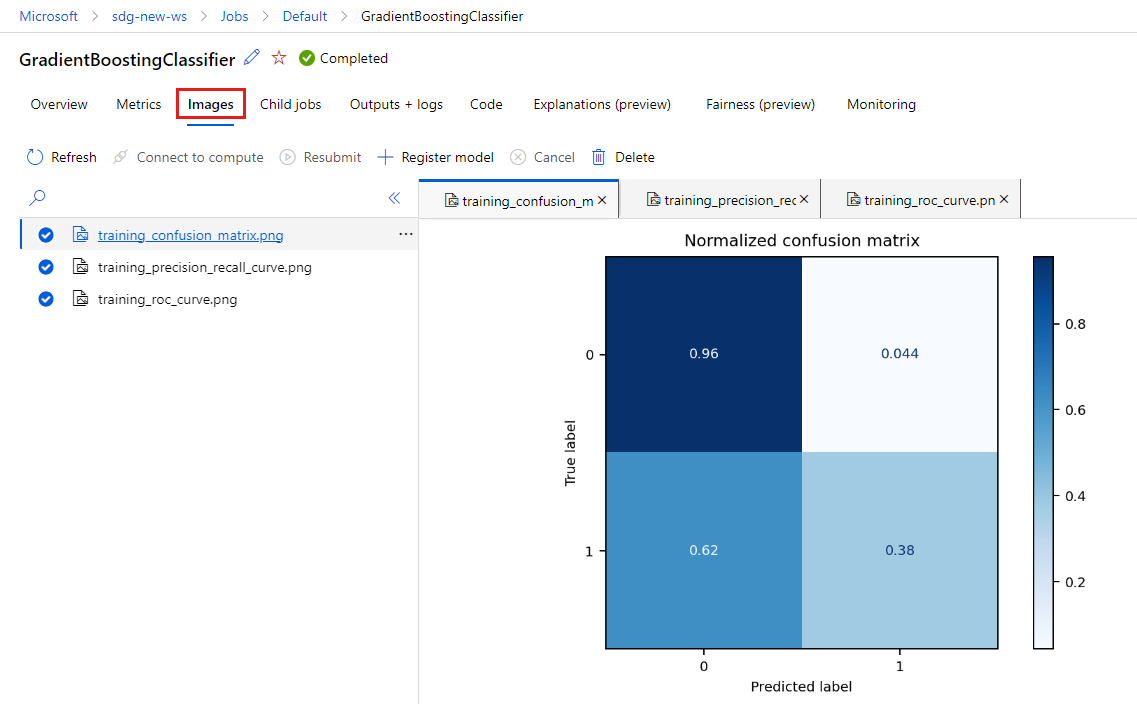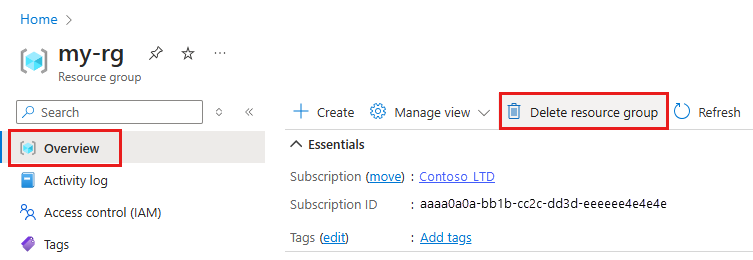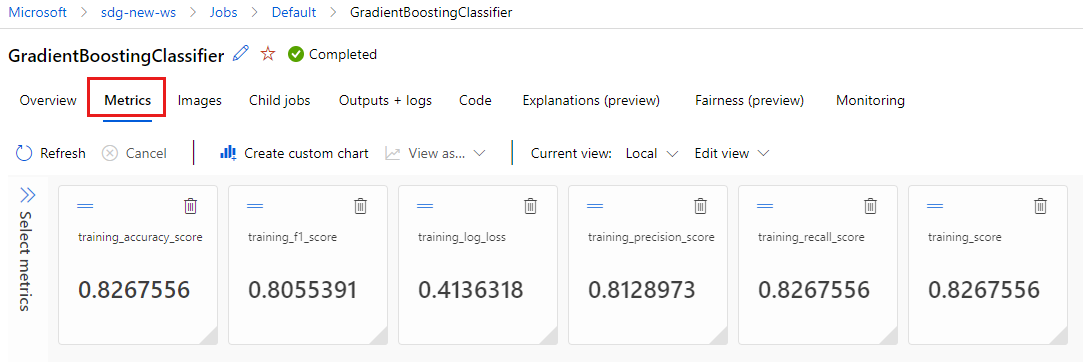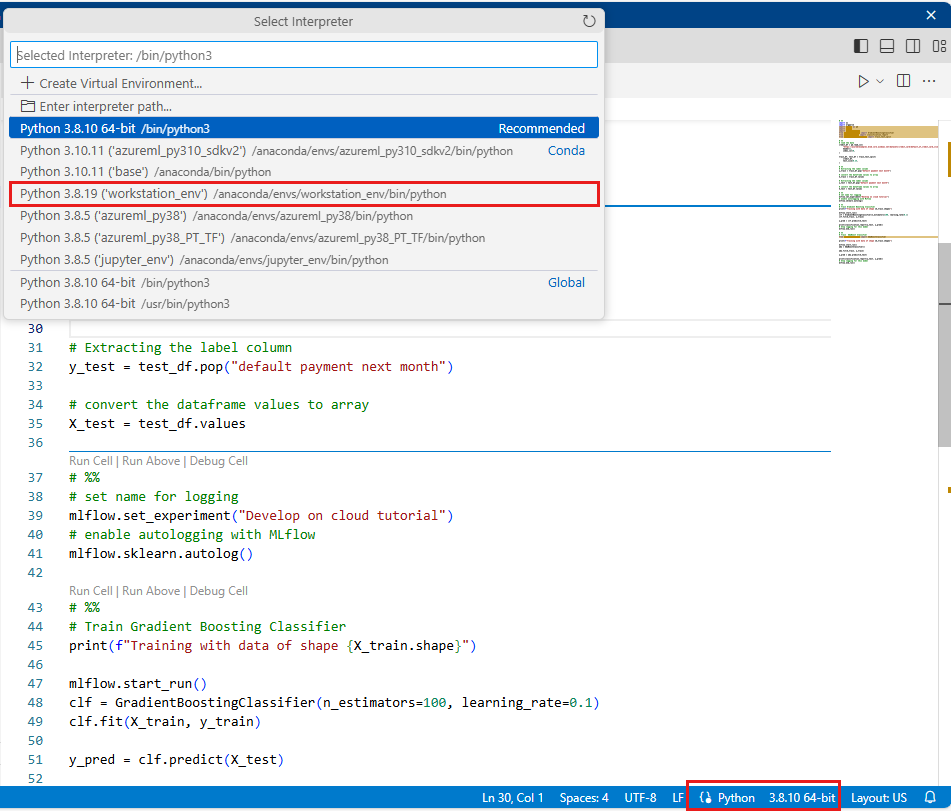Note
Access to this page requires authorization. You can try signing in or changing directories.
Access to this page requires authorization. You can try changing directories.
This article describes how to develop a training script by using a notebook on an Azure Machine Learning cloud workstation. The tutorial covers the basic steps that you need to get started:
- Set up and configure the cloud workstation. Your cloud workstation is powered by an Azure Machine Learning compute instance, which is pre-configured with environments to support your model development needs.
- Use cloud-based development environments.
- Use MLflow to track your model metrics.
Prerequisites
To use Azure Machine Learning, you need a workspace. If you don't have one, complete Create resources you need to get started to create a workspace and learn more about using it.
Important
If your Azure Machine Learning workspace is configured with a managed virtual network, you might need to add outbound rules to allow access to the public Python package repositories. For more information, see Scenario: Access public machine learning packages.
Create or start compute
You can create compute resources in the Compute section in your workspace. A compute instance is a cloud-based workstation that's fully managed by Azure Machine Learning. This tutorial series uses a compute instance. You can also use it to run your own code, and to develop and test models.
- Sign in to Azure Machine Learning studio.
- Select your workspace, if it isn't already open.
- In the left pane, select Compute.
- If you don't have a compute instance, you see New in the middle of the page. Select New and fill out the form. You can use all the defaults.
- If you have a compute instance, select it from the list. If it's stopped, select Start.
Open Visual Studio Code (VS Code)
After you have a running compute instance, you can access it in various ways. This tutorial describes how to use the compute instance from Visual Studio Code. Visual Studio Code provides a full integrated development environment (IDE) for creating compute instances.
In the compute instance list, select the VS Code (Web) or VS Code (Desktop) link for the compute instance you want to use. If you choose VS Code (Desktop), you might see a message asking if you want to open the application.
This Visual Studio Code instance is attached to your compute instance and your workspace file system. Even if you open it on your desktop, the files you see are files in your workspace.
Set up a new environment for prototyping
In order for your script to run, you need to be working in an environment that's configured with the dependencies and libraries the code expects. This section helps you create an environment that's tailored to your code. To create the new Jupyter kernel your notebook connects to, you use a YAML file that defines the dependencies.
Upload a file.
Files that you upload are stored in an Azure file share, and these files are mounted to each compute instance and shared within the workspace.
Go to azureml-examples/tutorials/get-started-notebooks/workstation_env.yml.
Download the Conda environment file workstation_env.yml to your computer by selecting the ellipsis button (...) in the top-right corner of the page and then selecting Download.
Drag the file from your computer to the Visual Studio Code window. The file is uploaded to your workspace.
Move the file into your username folder.

Select the file to preview it. Review the dependencies that it specifies. You should see something like this:
name: workstation_env # This file serves as an example - you can update packages or versions to fit your use case dependencies: - python=3.8 - pip=21.2.4 - scikit-learn=0.24.2 - scipy=1.7.1 - pandas>=1.1,<1.2 - pip: - mlflow-skinny - azureml-mlflow - psutil>=5.8,<5.9 - ipykernel~=6.0 - matplotlibCreate a kernel.
Now use the terminal to create a new Jupyter kernel that's based on the workstation_env.yml file.
In the menu at the top of Visual Studio Code, select Terminal > New Terminal.

View your current Conda environments. The active environment is marked with an asterisk (*).
conda env listUse
cdto navigate to the folder where you uploaded the workstation_env.yml file. For example, if you uploaded it to your user folder, use this command:cd Users/myusernameMake sure workstation_env.yml is in the folder.
lsCreate the environment based on the Conda file provided. It takes a few minutes to build the environment.
conda env create -f workstation_env.ymlActivate the new environment.
conda activate workstation_envNote
If you see CommandNotFoundError, follow instructions to run
conda init bash, close the terminal, and then open a new one. Then try theconda activate workstation_envcommand again.Verify that the correct environment is active, again looking for the environment marked with a *.
conda env listCreate a new Jupyter kernel that's based on your active environment.
python -m ipykernel install --user --name workstation_env --display-name "Tutorial Workstation Env"Close the terminal window.
You now have a new kernel. Next, you'll open a notebook and use this kernel.
Create a notebook
- In the menu at the top of Visual Studio Code, select File > New File.
- Name your new file develop-tutorial.ipynb (or use another name). Be sure to use the .ipynb extension.
Set the kernel
- In the top-right corner of the new file, select Select Kernel.
- Select Azure ML compute instance (computeinstance-name).
- Select the kernel you created: Tutorial Workstation Env. If you don't see the kernel, select the refresh button above the list.
Develop a training script
In this section, you develop a Python training script that predicts credit card default payments by using the prepared test and training datasets from the UCI dataset.
This code uses sklearn for training and MLflow for logging the metrics.
Start with code that imports the packages and libraries that you'll use in the training script.
import os import argparse import pandas as pd import mlflow import mlflow.sklearn from sklearn.ensemble import GradientBoostingClassifier from sklearn.metrics import classification_report from sklearn.model_selection import train_test_splitNext, load and process the data for the experiment. In this tutorial, you read the data from a file on the internet.
# load the data credit_df = pd.read_csv( "https://azuremlexamples.blob.core.windows.net/datasets/credit_card/default_of_credit_card_clients.csv", header=1, index_col=0, ) train_df, test_df = train_test_split( credit_df, test_size=0.25, )Get the data ready for training:
# Extracting the label column y_train = train_df.pop("default payment next month") # convert the dataframe values to array X_train = train_df.values # Extracting the label column y_test = test_df.pop("default payment next month") # convert the dataframe values to array X_test = test_df.valuesAdd code to start autologging with MLflow so that you can track the metrics and results. With the iterative nature of model development, MLflow helps you log model parameters and results. Refer to different runs to compare and understand how your model performs. The logs also provide context for when you're ready to move from the development phase to the training phase of your workflows within Azure Machine Learning.
# set name for logging mlflow.set_experiment("Develop on cloud tutorial") # enable autologging with MLflow mlflow.sklearn.autolog()Train a model.
# Train Gradient Boosting Classifier print(f"Training with data of shape {X_train.shape}") mlflow.start_run() clf = GradientBoostingClassifier(n_estimators=100, learning_rate=0.1) clf.fit(X_train, y_train) y_pred = clf.predict(X_test) print(classification_report(y_test, y_pred)) # Stop logging for this model mlflow.end_run()Note
You can ignore the MLflow warnings. The results you need will still be tracked.
Select Run All above the code.
Iterate
Now that you have model results, you might want to change something and try again. For example, try a different classifier technique:
# Train AdaBoost Classifier
from sklearn.ensemble import AdaBoostClassifier
print(f"Training with data of shape {X_train.shape}")
mlflow.start_run()
ada = AdaBoostClassifier()
ada.fit(X_train, y_train)
y_pred = ada.predict(X_test)
print(classification_report(y_test, y_pred))
# Stop logging for this model
mlflow.end_run()Note
You can ignore the MLflow warnings. The results you need will still be tracked.
Select Run All to run the model.
Examine the results
Now that you've tried two different models, use the results tracked by MLFfow to decide which model is better. You can reference metrics like accuracy, or other indicators that matter the most for your scenarios. You can review these results in more detail by looking at the jobs created by MLflow.
Return to your workspace in the Azure Machine Learning studio.
In the left pane, select Jobs.

Select Develop on cloud tutorial.
There are two jobs shown, one for each of the models you tried. The names are autogenerated. If you want to rename the job, hover over the name and select the pencil button next to it.
Select the link for the first job. The name appears at the top of the page. You can also rename it here by using the pencil button.
The page shows job details, like properties, outputs, tags, and parameters. Under Tags, you see the estimator_name, which describes the type of model.
Select the Metrics tab to view the metrics that were logged by MLflow. (Your results will be different because you have a different training set.)
Select the Images tab to view the images generated by MLflow.

Go back and review the metrics and images for the other model.
Create a Python script
You'll now create a Python script from your notebook for model training.
In Visual Studio Code, right-click the notebook file name and select Import Notebook to Script.
Select File > Save to save the new script file. Call it train.py.
Look through the file and delete code that you don't want in the training script. For example, keep the code for the model you want to use, and delete code for the model you don't want to use.
- Be sure you keep the code that starts autologging (
mlflow.sklearn.autolog()). - When you run the Python script interactively (as you're doing here), you can keep the line that defines the experiment name (
mlflow.set_experiment("Develop on cloud tutorial")). Or you can give it a different name to see it as a different entry in the Jobs section. But when you prepare the script for a training job, that line doesn't apply and should be omitted: the job definition includes the experiment name. - When you train a single model, the lines for starting and ending a run (
mlflow.start_run()andmlflow.end_run()) aren't necessary (they have no effect), but you can leave them in.
- Be sure you keep the code that starts autologging (
When you're finished with your edits, save the file.
You now have a Python script to use for training your preferred model.
Run the Python script
For now, you're running this code on your compute instance, which is your Azure Machine Learning development environment. Tutorial: Train a model shows how to run a training script in a more scalable way on more powerful compute resources.
Select the environment you created earlier in this tutorial as your Python version (workstations_env). In the lower-right corner of the notebook, you'll see the environment name. Select it, and then select the environment at the top of Visual Studio Code.
Run the Python script by selecting the Run All button above the code.
Note
You can ignore the MLflow warnings. You'll still get all the metrics and images from autologging.
Examine the script results
Go back to Jobs in your workspace in Azure Machine Learning studio to see the results of your training script. Keep in mind that the training data changes with each split, so the results differ between runs.
Clean up resources
If you plan to continue on to other tutorials, skip to Next steps.
Stop the compute instance
If you're not going to use it now, stop the compute instance:
- In the studio, in the left pane, select Compute.
- At the top of the page, select Compute instances.
- In the list, select the compute instance.
- At the top of the page, select Stop.
Delete all resources
Important
The resources that you created can be used as prerequisites to other Azure Machine Learning tutorials and how-to articles.
If you don't plan to use any of the resources that you created, delete them so you don't incur any charges:
In the Azure portal, in the search box, enter Resource groups and select it from the results.
From the list, select the resource group that you created.
In the Overview page, select Delete resource group.

Enter the resource group name. Then select Delete.
Next steps
See these resources to learn more:
- Artifacts and models in MLflow
- Using Git with Azure Machine Learning
- Running Jupyter notebooks in your workspace
- Working with a compute instance terminal in your workspace
- Manage notebook and terminal sessions
This tutorial shows the early steps of creating a model, prototyping on the same machine where the code resides. For your production training, learn how to use that training script on more powerful remote compute resources:



